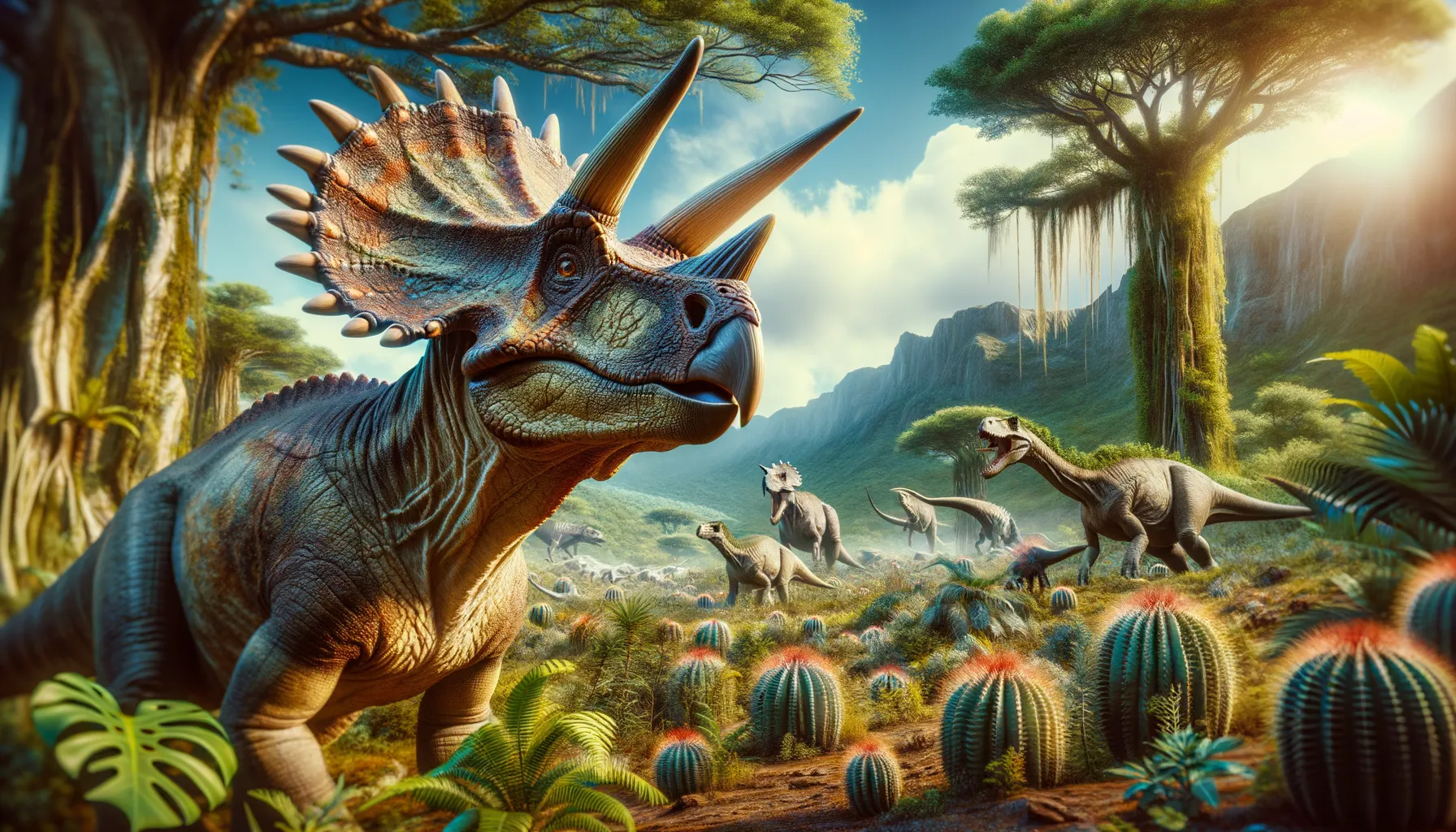
Notoceratops
The mystery of South America's ceratopsians!
Period
triassic
Length
Exact length is unknown, potentially similar to relatives around 5-7 meters.
Height
Height is unknown, but likely similar to medium-sized ceratopsians.
Weight
Estimated at several tonnes based on related species.
Notoceratops is a poorly understood dinosaur due to limited fossil evidence. Initially discovered in Argentina, it is believed to be a ceratopsian, a group known for their beaked faces and often frilled skulls. However, the scarcity of remains makes concrete claims about its exact structure and lifestyle challenging. Its existence adds to the knowledge of dinosaur diversity in South America during the Cretaceous period.
Diet
Notoceratops, presumed to be herbivorous like most ceratopsians, likely fed on a variety of plant materials. Its strong beak would have been adapted for cropping tough vegetation.
Hunting
As a plant-eater, it would not have hunted but focused on grazing. It likely defended itself against predators with its bulk and possibly social behavior or group living.
Environmental challenges
Notoceratops faced various environmental shifts during the Cretaceous, including climate changes and competition for resources. The shifting landscape could have influenced migratory patterns or adaptation in southern continents like South America. Predation pressure would have also been a constant challenge in its ecosystem.
Speed
Unknown, likely slow due to its size and bulk.
Lifespan
Unknown, typical lifespan is difficult to determine.
First discovery
First found in Argentina, 1918, but remains are scarce.
Fun Facts
- Notoceratops is a mysterious dinosaur because very little evidence of its existence has been found.
- The name Notoceratops means 'southern horned face,' suggesting it might have had horns similar to some other ceratopsians.
- Notoceratops is thought to have lived during the Late Cretaceous period in what is now South America.
- The initial discovery of Notoceratops was based on very fragmentary fossils, leading to debates in the scientific community about its classification.
- Despite being named over a century ago, Notoceratops remains an enigmatic dinosaur with new discoveries eagerly awaited.
- Notoceratops is often a subject of intrigue among paleontologists due to its incomplete fossil record.
- Its elusive nature fuels curiosity and inspires ongoing paleontological exploration in South America.
Growth and Development
Growth would have been influenced by food availability and environmental conditions. Like other dinosaurs, it likely underwent different growth stages from hatchling to adulthood, each stage requiring adaptation to survive. Potentially, it experienced rapid growth phases to reach adult sizes typical of large herbivores.
Habitat
Notoceratops inhabited regions that are now modern-day Argentina, suggesting it lived in diverse habitats such as plains and forested areas. The environment provided ample plant material, which supported its herbivorous diet. Fossil evidence points to a varied landscape populated by a range of other dinosaur species.
Interaction with other species
Co-existing with predators like theropods, it likely had to use social behavior and physical traits for protection. Its plant-based diet meant it cohabited with other herbivores, possibly competing for similar resources. Fossil evidence of other species suggests robust ecosystems with dynamic interactions.
Natural lifespan
Lifespan is uncertain but could range decades if it survived predators and environmental hardships.
Reproduction
Reproduction likely involved laying clutches of eggs, as seen in related species. Parental care in dinosaurs is a topic of ongoing research, but there could have been some level of nest guarding. Social structures could influence mating behaviors and success.
Social behaviour
Social behavior is largely unknown, but ceratopsians often exhibited group living which might apply here. Herding could have provided protection and social interaction among Notoceratops. Group dynamics in ceratopsians suggest complex social interactions, which might be true in this species as well.
Fossil locations
The principal fossil evidence is sparse and primarily comes from Argentina, discovered in the early 20th century. The scarcity of discoveries limits detailed understanding, highlighting the need for further paleontological efforts in South America. Fossils remain a key to uncovering more about its way of life and confirming specific traits.
